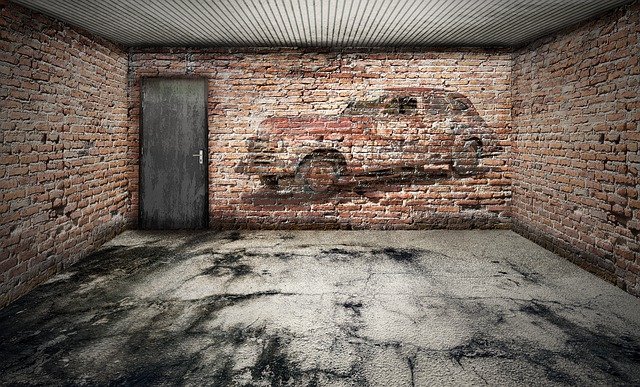How Many Coats of Paint on the Ceiling?
When it comes to painting a ceiling, many homeowners and DIY enthusiasts often wonder, “How many coats of paint on the ceiling are necessary?”
Whether you’re giving your room a fresh look or renovating your home, the number of paint coats can significantly impact the final appearance and longevity of the paint job. In this article, we will provide a detailed response to this common question, helping you achieve a beautifully painted ceiling.
Understanding the Need for Multiple Coats
Before we delve into the specifics, it’s essential to understand why multiple coats of paint on the ceiling are often required. Ceilings typically receive less light and more shadow, making imperfections and unevenness in the paint job more noticeable.
Additionally, most ceilings are painted in lighter colors, which may not provide full coverage in a single coat. The use of multiple coats helps achieve a smooth, even finish, concealing any underlying flaws and providing better coverage.
How Many Coats Do You Need?
To achieve the best results and a flawless finish, it is generally recommended to apply two coats of paint on the ceiling. However, some factors may influence this number:
1. Existing Color and Coverage
If your ceiling has a dark or vivid color, achieving full coverage with just two coats may be challenging.
In such cases, you might require an extra coat to avoid the previous color showing through. Dark colors can be stubborn to cover, and applying an additional coat will help create a solid base for the new paint color.
2. Quality of Paint
The quality of paint used plays a significant role in determining coverage. Higher-quality paints often have better pigmentation, reducing the need for additional coats.
Look for paints with higher levels of titanium dioxide, as it enhances opacity and coverage. Investing in premium paints may cost more initially but can save you time and effort in the long run.
3. Surface Preparation
Proper surface preparation is key to a successful paint job. Before starting, clean the ceiling to remove any dirt, dust, or grease.
Patch up any holes or imperfections using spackling compound or putty, and sand the surface for a smooth finish. Applying a primer specifically designed for ceilings will improve adhesion and coverage, further reducing the number of coats needed.
4. Painting Technique
Applying paint evenly with the right technique can help achieve better coverage, potentially reducing the number of coats needed.
Start by cutting in the edges and corners with a brush, and then use a paint roller for the larger surface area. Avoid overloading the roller with paint, as it can lead to drips and uneven coverage. Apply the paint in thin, even layers for optimal results.
Two Coats for Most Ceilings
In most cases, two coats of paint should be sufficient to achieve a professional-looking finish on your ceiling. Applying the first coat as a base and then following up with a second coat will ensure even coverage and a smooth surface.
Two coats are considered standard practice in the painting industry, and this approach will give your ceiling a uniform appearance.
Remember: Always allow the first coat to dry completely before applying the second coat. Follow the manufacturer’s recommended drying time between coats for the best results.
Additional Tips for a Perfectly Painted Ceiling
1. Use High-Quality Paint and Tools
Invest in high-quality paint and painting tools to ensure a smoother application and a more durable finish. Low-quality paints may result in uneven coverage and require more coats.
Choose paints that are specifically formulated for ceilings to ensure better adhesion and opacity.
2. Opt for a Roller
Using a paint roller is the most efficient way to paint a ceiling, providing even coverage and reducing fatigue. Choose a roller with a suitable nap length for your ceiling texture.
For smooth ceilings, use a short nap roller (3/8 inch), and for textured ceilings, opt for a longer nap roller (3/4 inch to 1 inch).
3. Work in Sections
Divide the ceiling into manageable sections to ensure thorough coverage and avoid leaving any areas untouched. This approach helps maintain a consistent finish throughout the ceiling.
Start with a small section and complete it before moving on to the next. Working in small sections also helps you keep track of where you have painted.
4. Be Mindful of Drips
To avoid drips and uneven coverage, apply paint with consistent pressure on the roller and check for drips frequently.
Keep a paint tray handy to remove excess paint from the roller. If you notice drips, use a brush to smooth them out immediately before they dry.
5. Maintain a Consistent Direction
Paint in one consistent direction to achieve a uniform finish and avoid visible brush or roller marks.
Starting from one end and working your way to the other will result in a more professional look. Avoid going back and forth in random directions, as this can lead to an uneven application.
Frequently Asked Questions
1. Can I get away with just one coat of paint on the ceiling?
While one coat might be sufficient for some ceilings, it is generally recommended to apply at least two coats for better coverage and a professional finish. One coat may leave visible streaks and unevenness, especially with lighter-colored paints.
If you’re using high-quality paint with excellent coverage, one coat may be enough, but it’s safer to apply two coats for optimal results.
2. Should I use a primer before painting the ceiling?
Using a primer can enhance adhesion and coverage, especially when dealing with stains or a different paint type. It’s advisable to use a primer when necessary to achieve a smoother finish.
Primers create a solid foundation for the paint, improve adhesion, and help cover imperfections.
3. Can I use a brush to paint the ceiling?
Using a brush for painting the entire ceiling can be time-consuming and result in a less even finish. A paint roller is the preferred tool for this task, as it covers a larger area more efficiently.
However, using a brush for cutting edges and corners is recommended before rolling to ensure precise lines.
4. How long should I wait between applying coats of paint?
Follow the manufacturer’s guidelines for drying times between coats to ensure proper adhesion and a smooth finish. Typically, it’s best to wait for the first coat to dry completely before applying the second coat.
Drying times can vary based on the paint type and environmental conditions, so check the paint can label for specific recommendations.
5. What can I do if I don’t like the color after applying two coats?
If you’re unhappy with the color after two coats, you may need to apply additional coats or choose a new paint color entirely.
It’s essential to select a paint color that complements your room’s lighting and decor. Before applying more coats, wait for the paint to dry completely to get an accurate representation of the final color.





